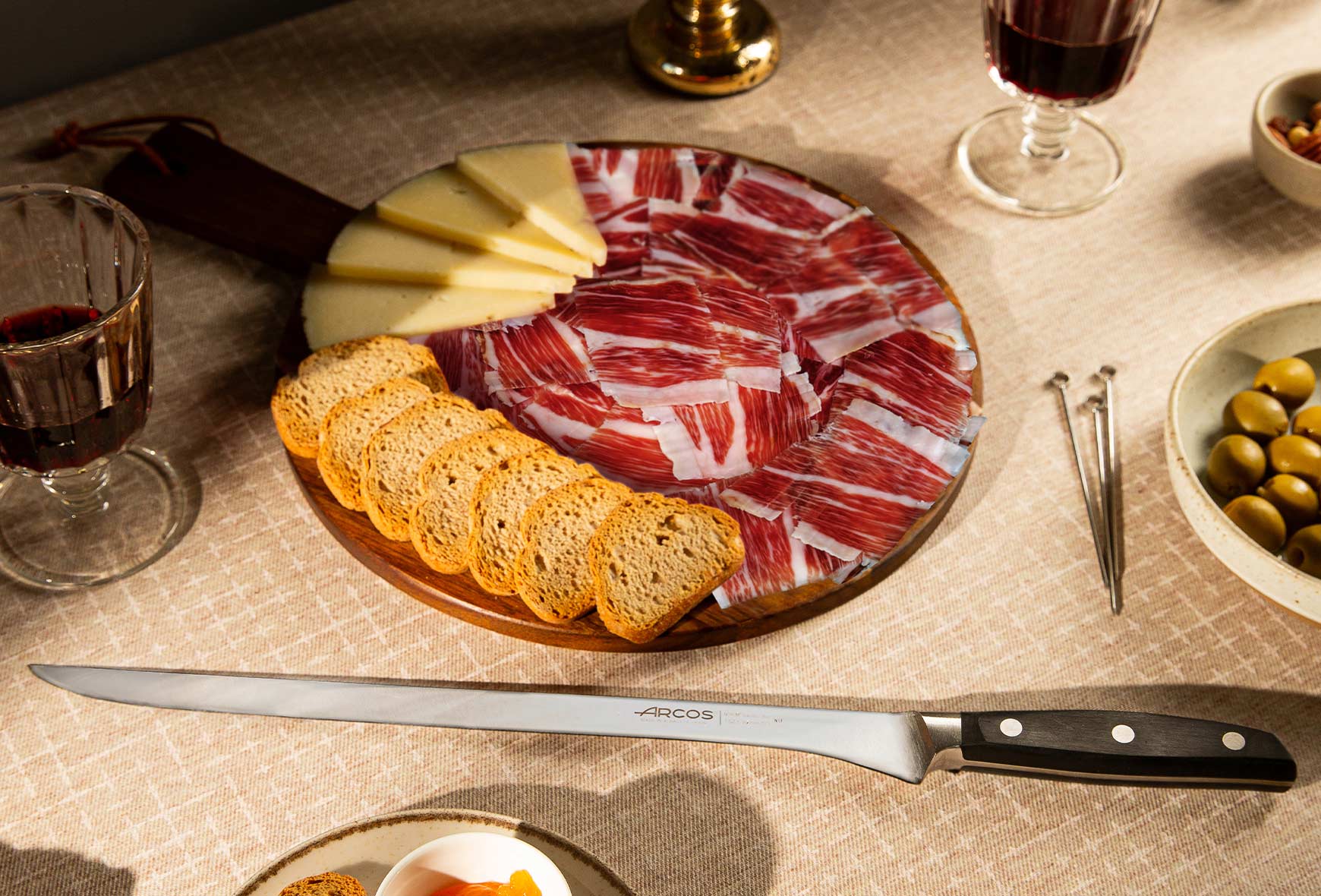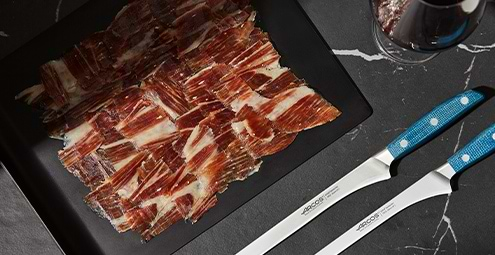Types of Ham in Spain
Ham in Spain is synonymous with tradition and culture. It is an authentic gastronomic emblem of our country, capable of crossing all borders and captivating millions of palates worldwide. Few can resist savoring this exquisite delicacy. In fact, once you try it, you can’t live without it.
From Iberian ham to the delicious Serrano ham, not forgetting Bellota ham or Jabugo ham, Spanish supermarkets and delicatessens offer a wide variety of hams to choose from. Sometimes, the sheer variety can make it hard to decide on just one. To help you fully enjoy this iconic food, we’ll explain the characteristics of each type of ham in Spain, the importance of understanding their denomination of origin, and everything you need to know about ham knives, which are essential for properly cutting and savoring this delicious product.
Types of ham you can find in Spain
01 Iberian Ham
Originating from the Iberian pig, Iberian ham could be considered the star among the different types of ham available in Spain. This ham stands out for its unique flavor and rich texture. Furthermore, depending on the diet of the animal, it can be classified into:
- Bellota Iberian: These pigs are fed exclusively with acorns from the field. This type of ham has a much more intense flavor with subtle sweet notes.
- Cebo Iberian: The pigs used are raised on feed in controlled farms.
- Cebo de Campo Iberian: The animals combine a diet of both pasture and feed.
When analyzing the characteristics of this ham, we can observe its distinctive marbled fat and silky texture. Additionally, the intensity of its red colors and the pearly white fat that stands out is notable.
As a fun fact, it’s worth mentioning that this Bellota Iberian ham can take up to 4 years to fully cure. And don’t just take our word for it – this is explained by the Denomination of Origin Dehesa de Extremadura.
02 Serrano Ham
A classic of our diet and gastronomy. Although it is the most widespread ham, it is not of the highest quality, as it comes from white pigs rather than the native Iberian breed of the peninsula, as with jamón ibérico. Even so, it remains a very rich and coveted food in households both inside and outside of Spain.
Its curing process takes place in regions with a drier and colder climate. Depending on the curing time, we find the following types:
- Jamón Bodega: Cured for 9 to 12 months.
- Jamón Reserva: Cured for 12 to 15 months.
- Jamón Gran Reserva: Cured for more than 15 months.
The flavor of this ham is somewhat milder compared to jamón ibérico. Additionally, its meat has a more uniform and pinkish color. It is estimated that nearly 90% of the ham produced in Spain corresponds to this type of ham. This is a figure shared by the National Association of Meat Industries of Spain (ANICE).
03 Ham by region
Denomination of Origin of Ham
In our country, the quality of ham is protected thanks to the Denominations of Origin (D.O.). These labels ensure that each of these products meets a series of basic requirements and standards, including the breed of the pig, its diet throughout the growth process, and, of course, its curing process.
Although we’ve already mentioned some of them, the main D.O.s are:
- Dehesa de Extremadura: A reference for the purity of its breed and quality.
- Jamón de Huelva (Jabugo): Popular worldwide for the intensity of its flavor.
- Jamón de Teruel: Excellent quality-price ratio.
- Jamón de Guijuelo: A very delicate and juicy texture.
These denominations help preserve the traditions behind the creation of this food.

What is the best ham in Spain?


Ham Knives
To enjoy the flavor and quality of a good ham, it is essential to have a good set of ham knives on hand. If you are a fan of this delicacy, a set of special knives, a sharpener, and, of course, a ham holder should be a must in your home.
With this kit and the choice of one of these types of hams, you’ll be able to enjoy this delicious food typical of our country like never before.


